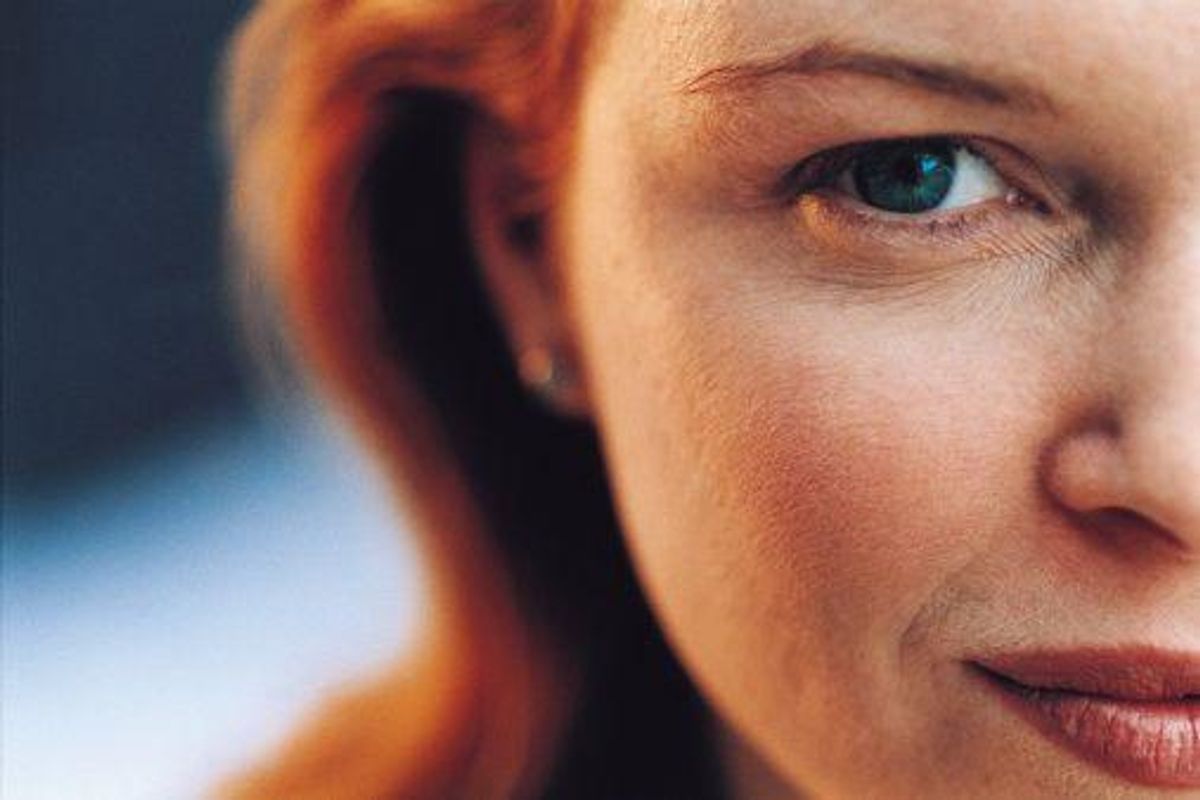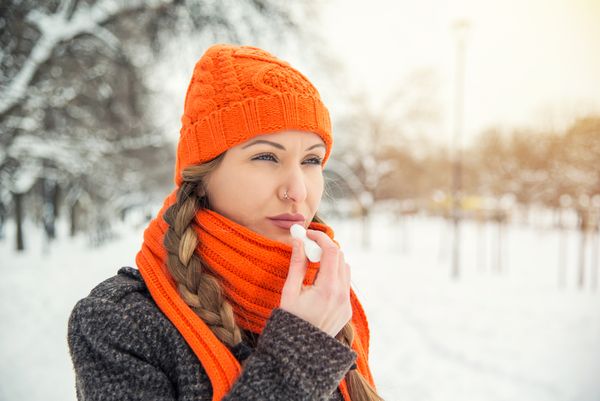Most of us can recall a high school dance or teenage date spoiled by a surprise blemish or breakout. Unfortunately, for an estimated 16 million Americans, there's another skin problem that can spark anxiety and embarrassment reminiscent of those adolescent days: rosacea.
Rosacea is a chronic, inflammatory skin condition that may include symptoms such as facial redness, bumps, pimples and visible blood vessels. It can even affect the eyes. While the exact cause of this condition is unknown, the most common symptom—persistent facial redness—is caused by dilated blood vessels that cause an increased blood flow to the skin. Although it's sometimes confused with acne (because of its second most common symptom —bumps and blemishes), rosacea is a different condition that requires different treatment. In fact, products intended to treat acne can make rosacea worse. People with fair skin over age 30 are more likely to get rosacea, but it can affect people of any age, from any background. And while it is more common in women, men tend to get more severe cases.
If left untreated, rosacea can progress over time. According to a National Rosacea Society survey, half of sufferers who didn't get treated early said their rosacea advanced within one year. The sooner you seek treatment, the better your chances of preventing flare-ups and keeping this chronic condition from worsening.
Relaxing Rosacea: How to Calm an Irritated Face
While there is no cure for rosacea, a number of treatment options can help keep symptoms under control. Managing the condition typically involves a combination of lifestyle changes and prescription medications. Talk to your health care provider about what triggers may be aggravating your rosacea and what treatment options may be best for you. Because rosacea can be difficult to recognize and treat, a dermatologist is your best bet for managing this chronic condition.
Treatment options include the following:
- For rosacea redness: To treat persistent facial redness, the most common symptom of rosacea, a new treatment option is now available. Mirvaso® (brimonidine) topical gel, 0.33%*, is the first FDA-approved medication developed to treat the persistent facial redness of rosacea. Mirvaso is thought to work by constricting dilated facial blood vessels to reduce redness. Used daily, topical Mirvaso works quickly and reduces redness for up to 12 hours. Erythema, flushing, skin burning sensation and contact dermatitis are the most common side effects of brimonidine. Because Mirvaso is an alpha-2 adrenergic agent, it can lower blood pressure and should be used with caution in patients with uncontrolled cardiovascular disease.
- For bumps and blemishes: There are several medications approved to treat the bumps and blemishes of rosacea, including metronidazole and topical azelaic acid. Common side effects of metronidazole include cold symptoms, upper respiratory tract infection and headache. Other topical treatments may include sulfacetamide/sulfur cream or wash, but many find the odor unpleasant. An oral anti-inflammatory, doxycycline, is approved in a low-dose formulation to treat the bumps and pimples associated with rosacea. This once-daily pill is a convenient alternative to creams and gels and has not been shown to cause bacterial resistance. Common side effects include cold symptoms, sinus infection, diarrhea, hypertension and increased liver enzymes.
- For skin thickening: To remove thick skin that can appear on the nose and other parts of the face, doctors may use lasers, dermabrasion (a procedure that removes skin layers) or eletrocautery (a procedure that treats skin with an electrical current). Severe cases may require surgery including cryosurgery, radiofrequency ablation and others.
- For visible blood vessels: To shrink visible blood vessels, doctors may use lasers, pulsed light therapy or surgery. For lasers or light therapy, several sessions are usually required.
- For eye irritation: Watery or bloodshot eyes, tearing and burning, swollen eyelids and recurrent sties may also be symptoms of rosacea. While nothing is approved to treat ocular rosacea, health care professionals often recommend artificial tears, oral antibiotics and daily cleaning of eyelashes with baby shampoo on a wet washcloth.
In addition to following your health care provider's guidance on treatment with prescription medications, there are things you can do on your own to help manage your rosacea:
- Practice gentle skin care.
- Avoid ingredients such as menthol, fragrance, witch hazel, alcohol and peppermint, proven rosacea aggravators.
- Use makeup and other skin products made for people with sensitive skin or rosacea.
- Apply sunscreen every day and avoid sun exposure.
- Identify and minimize personal triggers. Sun, stress, alcohol, extremely hot or cold weather conditions, exercise and spicy foods are common triggers of rosacea.
While flare-ups can occur sporadically, the good news is that practicing smart skin care and following the tips above can significantly improve your skin. Rosacea can be frustrating and embarrassing and can cause anxiety. But you don't have to clear your social calendar every time you suffer a flare-up.
To find the best treatment for you, make an appointment with a dermatologist. Ask your primary care provider to recommend a specialist, or go to the physician finder at the National Rosacea Foundation at www.rosacea.org.
You are encouraged to report negative side effects of prescription drugs to the FDA online or call 1-800-FDA-1088.
* Each gram of gel contains 5 mg of brimonidine tartrate, equivalent to 3.3 mg of brimonidine free base.
This resource was created with the support of Galderma.







